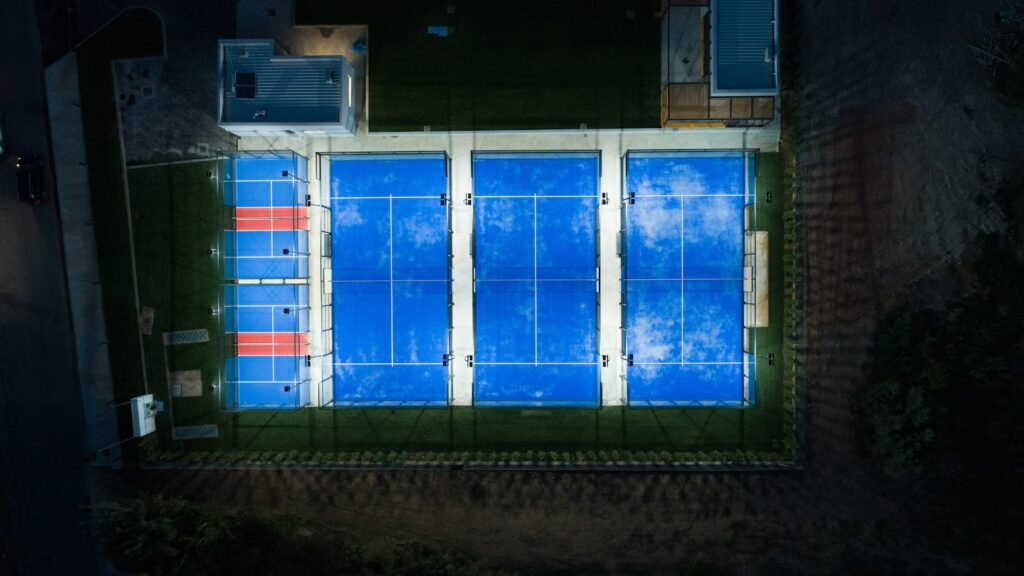Hit Like a Pro: How to Execute Effective Defensive Groundstrokes in Padel
3 min read
Hit Like a Pro: How to Execute Effective Defensive Groundstrokes in Padel
Are you tired of being on the back foot during intense padel matches? Do you often find yourself struggling to return powerful shots? Well, fret no more! In this article, we’ll dive into the art of executing effective defensive groundstrokes in padel. By the end, you’ll be well-equipped to take on opponents with style and finesse.
The Basics of Defensive Groundstrokes
Before we delve into the intricacies of defensive groundstrokes, let’s first understand what they are. In padel, defensive groundstrokes are shots played from a defensive position near the back of the court. These shots become necessary when your opponents hit aggressive shots that put you on the defensive. So, how can you turn the tables on them?
1. Stay Calm and Composed
It’s easy to panic when you find yourself in a defensive position, but remember, padel is a game of strategy and control. Take a deep breath, clear your mind, and focus on executing your shots with precision. Being calm will allow you to react quickly and plan your next move effectively.
2. Position Yourself Correctly
Proper positioning is crucial in padel, especially during defensive situations. Stand with your feet shoulder-width apart, knees slightly bent, and your weight distributed evenly. By maintaining a balanced stance, you’ll be ready to move swiftly in any direction to reach the ball.
3. Master the Art of Anticipation
To excel at defensive groundstrokes, it’s essential to anticipate your opponent’s shots. Watch their body language, racket position, and track the ball’s trajectory. By reading the game well, you can position yourself advantageously and have a higher chance of executing successful defensive shots.
The Technique: Executing the Perfect Defensive Groundstroke
Now that we have covered the basics, let’s dive into the technique required to hit a defensive groundstroke like a pro. Remember, it’s all about timing, accuracy, and a touch of finesse.
1. Take a Step Back
As soon as you recognize that your opponent’s shot is putting you on the defensive, take a small step back. This slight retreat will give you more time to assess the situation and position yourself correctly for the incoming shot.
2. Load and Prepare
Simultaneously with your step back, prepare your paddle by bringing it back and slightly upwards, similar to your opponent’s shot trajectory. By doing so, you’ll generate more power and give yourself a better chance of returning the ball with accuracy.
3. Swing with Precision
As the ball approaches, swing your paddle forward, aiming to meet the ball at the same level as it would be when crossing the net. Keep your eyes focused on the ball and maintain a firm grip on the paddle. Remember, the goal is to make a clean contact and send the ball back with accuracy and height.
4. Follow Through and Recover
After executing the shot, follow through with your swing by extending your arm forward. This action will guide the ball over the net and ensure maximum control. Once you’ve hit the shot, quickly recover by getting back into your ready position.
Practice Makes Perfect
Now that you have the knowledge and techniques to hit defensive groundstrokes, it’s time to put them into practice! Partner up with a friend or join a club to refine your skills. Remember, consistency and dedication are key to becoming a pro at defensive groundstrokes in padel.
Conclusion
By mastering the art of defensive groundstrokes, you’ll be well-equipped to handle any aggressive shots that come your way. Remember to stay calm, anticipate your opponent’s moves, and execute your shots with finesse. With practice, you’ll gain the skills necessary to hit defensive groundstrokes like a pro. So, get out on the court and show off your newfound expertise!






